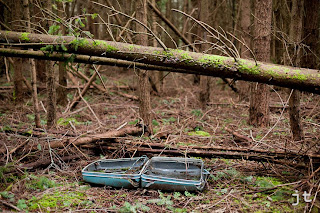Last Tuesday, I attended a fine art portfolio review organized by the New York City chapter of the
ASMP (American Society of Media Photographers), a trade group of which I am a member. The review, held in the meeting space of
Calumet Photo in Manhattan, brought together 40 gallery owners, curators, editors, and collectors to look at new work. There were between 100 - 110 people in attendance.
I had the good fortune of expecting a friendly face:
Doug Ljunkvist. Doug and I met late last year in a photographer's forum on Facebook, known as Flak Photo Network. We had exchanged observations about various points of photography and we quickly discovered we had similar photographic sympathies. The review provided us the opportunity to meet in person. He was sharing his ongoing project involving Ocean Beach, NJ.
I arrived early and was able to secure my choice of reviewers. For me, the value of this experience lies not in examining a single person's thread, but stepping back and looking at what all the strands look like, including the strands drawn by other photographers showing that night.
For example, I love that, of a particular image, one reviewer said: "I think this is a really powerful image," where another observed about the exact same image "A little heavy handed, don't you think?"
I enjoyed discovering those particular images that made the reviewers slow down, to discover those 4 or 5 images that hooked them. I have never written poetry, but it I imagine it is like watching someone read a selection of your poems. I enjoyed watching the reviewers read my pictures and knowing where their eyes were on an image. And it is a particular pleasure to see someone smile when they look at my work.
While I waited in between reviews, I chatted with a wide range of photographers sharing their work. I could make some pretty good guesses about who in the room thought they were the next big thing. Some hid their craving for approval better than others. The majority seemed like decent enough people. My one generalization: the room could have been divided between those presenting their vision and those seeking affirmation of their vision.
A couple of days later I went for a photo-walk with Doug and we talked about our respective photographic journeys over pizza in Brooklyn.
I will be attending another fine art portfolio review, next month in Houston. More about that later.












































